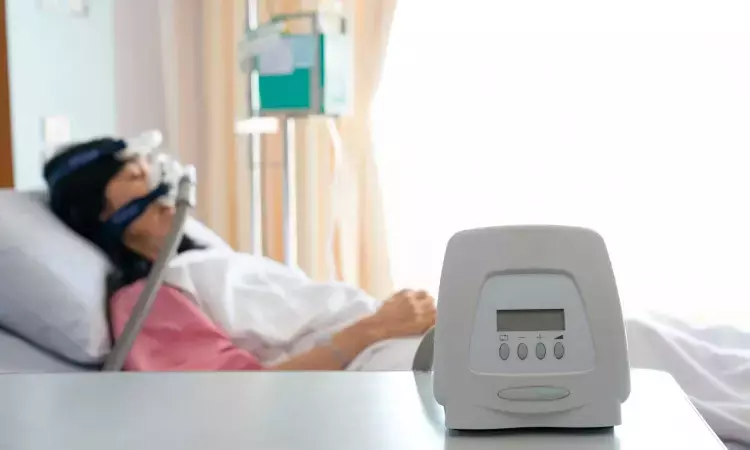- Home
- Medical news & Guidelines
- Anesthesiology
- Cardiology and CTVS
- Critical Care
- Dentistry
- Dermatology
- Diabetes and Endocrinology
- ENT
- Gastroenterology
- Medicine
- Nephrology
- Neurology
- Obstretics-Gynaecology
- Oncology
- Ophthalmology
- Orthopaedics
- Pediatrics-Neonatology
- Psychiatry
- Pulmonology
- Radiology
- Surgery
- Urology
- Laboratory Medicine
- Diet
- Nursing
- Paramedical
- Physiotherapy
- Health news
- Fact Check
- Bone Health Fact Check
- Brain Health Fact Check
- Cancer Related Fact Check
- Child Care Fact Check
- Dental and oral health fact check
- Diabetes and metabolic health fact check
- Diet and Nutrition Fact Check
- Eye and ENT Care Fact Check
- Fitness fact check
- Gut health fact check
- Heart health fact check
- Kidney health fact check
- Medical education fact check
- Men's health fact check
- Respiratory fact check
- Skin and hair care fact check
- Vaccine and Immunization fact check
- Women's health fact check
- AYUSH
- State News
- Andaman and Nicobar Islands
- Andhra Pradesh
- Arunachal Pradesh
- Assam
- Bihar
- Chandigarh
- Chattisgarh
- Dadra and Nagar Haveli
- Daman and Diu
- Delhi
- Goa
- Gujarat
- Haryana
- Himachal Pradesh
- Jammu & Kashmir
- Jharkhand
- Karnataka
- Kerala
- Ladakh
- Lakshadweep
- Madhya Pradesh
- Maharashtra
- Manipur
- Meghalaya
- Mizoram
- Nagaland
- Odisha
- Puducherry
- Punjab
- Rajasthan
- Sikkim
- Tamil Nadu
- Telangana
- Tripura
- Uttar Pradesh
- Uttrakhand
- West Bengal
- Medical Education
- Industry
Study Finds Strong Connection Between OSA and MASLD in Type 2 Diabetes Patients

China: A recent study published in Scientific Reports has identified a strong link between obstructive sleep apnea (OSA) and metabolic dysfunction-associated steatotic liver disease (MASLD) among individuals with type 2 diabetes mellitus (T2DM). The findings highlight the importance of early detection and management of both conditions to prevent further health complications.
The study conducted by Dr. Qiang Lu and colleagues from the Department of Endocrinology at the First Hospital of Qinhuangdao, China, evaluated hospitalized T2DM patients using polysomnography to diagnose OSA and ultrasound imaging to assess the presence and severity of MASLD. Researchers also recorded relevant patient characteristics, including age, sex, diabetes duration, lifestyle habits (smoking and alcohol use), BMI, blood glucose, and lipid levels.
OSA severity was determined using the apnea-hypopnea index (AHI), while additional indicators such as the oxygen desaturation index (ODI) and the lowest oxygen saturation (LSaO2) during sleep were also considered.
The following were the key findings:
- A high prevalence (64.4%) of coexisting obstructive sleep apnea (OSA) and metabolic dysfunction-associated steatotic liver disease (MASLD) was observed among participants.
- All patients with severe MASLD were found to have OSA, with 50% exhibiting moderate or severe forms of the condition.
- The severity of MASLD increased in parallel with the severity of OSA.
- Nearly 92% of individuals with moderate-to-severe OSA had moderate-to-severe MASLD.
- The higher apnea-hypopnea index (AHI) and oxygen desaturation index (ODI), along with lower lowest oxygen saturation (LSaO2), were strongly associated with more severe MASLD.
- Among patients with moderate-to-severe MASLD, 62.5% had elevated AHI, 58.5% had reduced LSaO2, and 57.2% had high ODI values.
- The association between OSA and MASLD severity remained significant even after adjusting for age, sex, BMI, and metabolic factors.
- Researchers proposed that OSA may worsen liver disease progression in diabetic patients due to intermittent hypoxia and metabolic disruption.
- The presence of MASLD may also contribute to the worsening of sleep-related breathing disorders.
“Our findings highlight the bidirectional relationship between OSA and MASLD in individuals with type 2 diabetes,” the authors stated. “This calls for routine screening of MASLD in OSA patients and vice versa, particularly in those with diabetes, to allow timely intervention.”
"Given the progressive nature of both conditions and their shared metabolic pathways, we strongly recommend timely and comprehensive screening for each condition in patients diagnosed with the other. Early identification through tools such as polysomnography and liver imaging—even in the absence of symptoms—can play a crucial role in preventing long-term systemic complications and improving overall patient outcomes,” the authors concluded.
Reference:
Jia, X., Zou, C., Lu, N., Lu, Q., & Xie, C. (2025). Obstructive sleep apnea is ralated to metabolic dysfunction associated steatotic liver disease in type 2 diabetes mellitus. Scientific Reports, 15(1), 1-9. https://doi.org/10.1038/s41598-025-09985-x
Dr Kamal Kant Kohli-MBBS, DTCD- a chest specialist with more than 30 years of practice and a flair for writing clinical articles, Dr Kamal Kant Kohli joined Medical Dialogues as a Chief Editor of Medical News. Besides writing articles, as an editor, he proofreads and verifies all the medical content published on Medical Dialogues including those coming from journals, studies,medical conferences,guidelines etc. Email: drkohli@medicaldialogues.in. Contact no. 011-43720751


